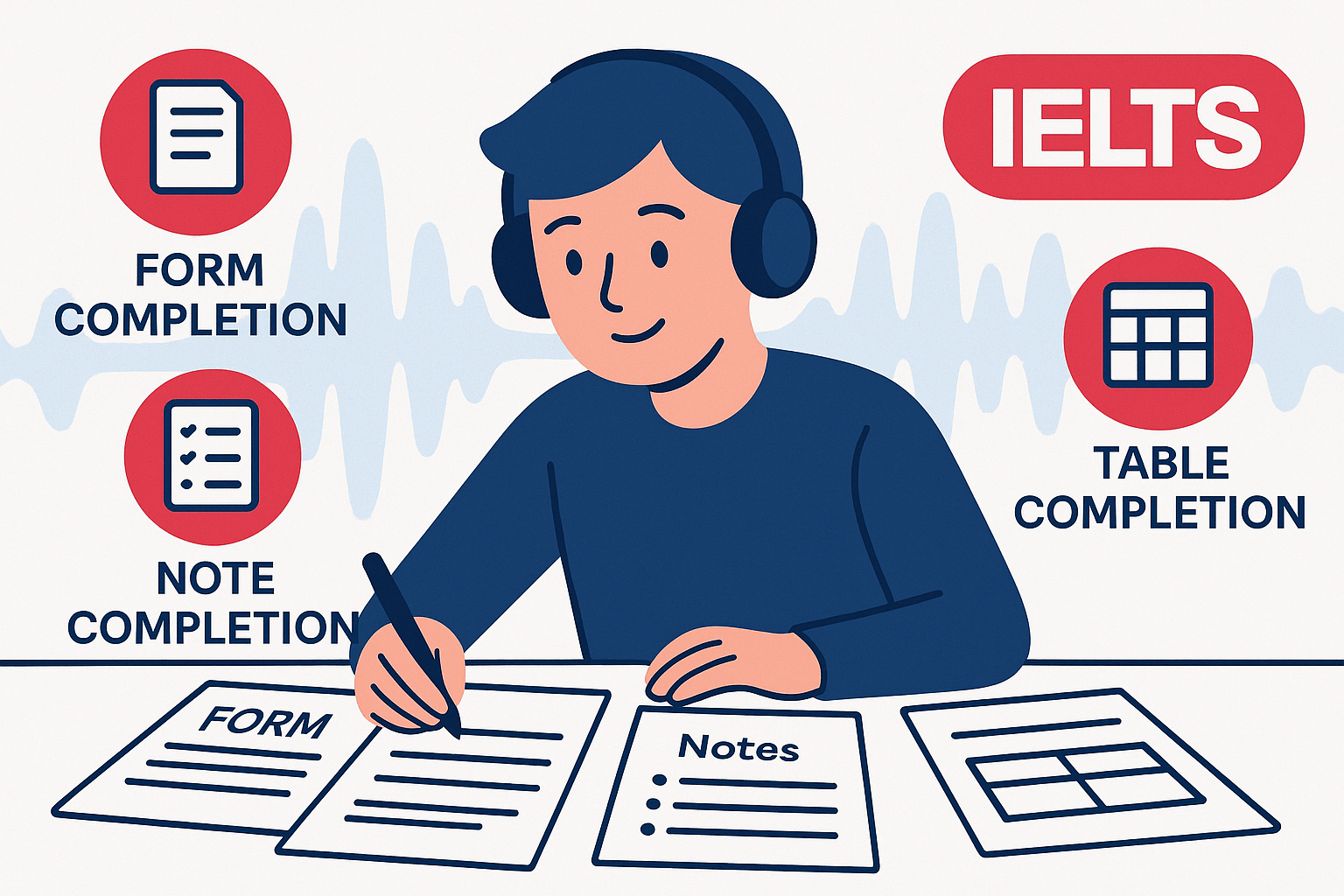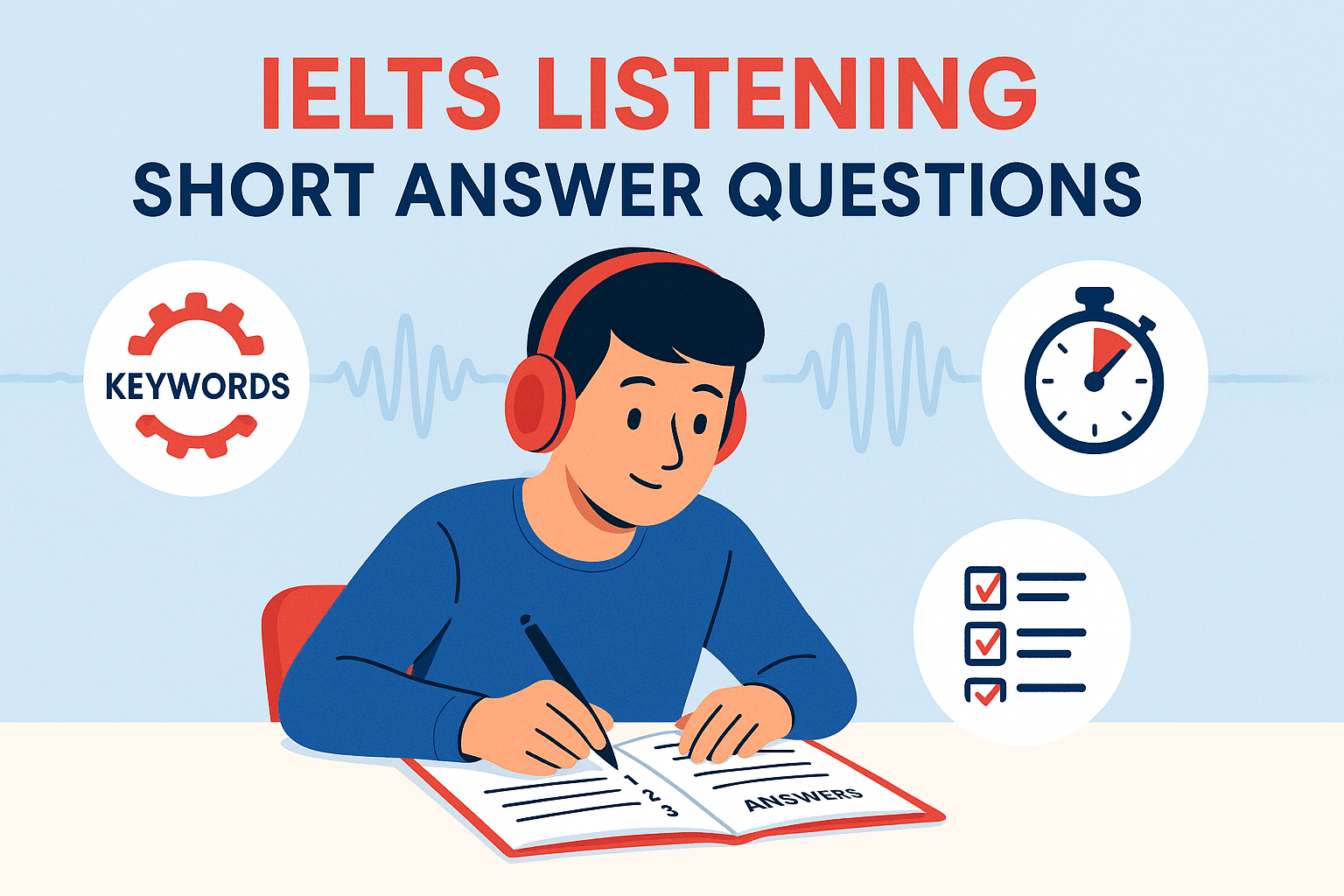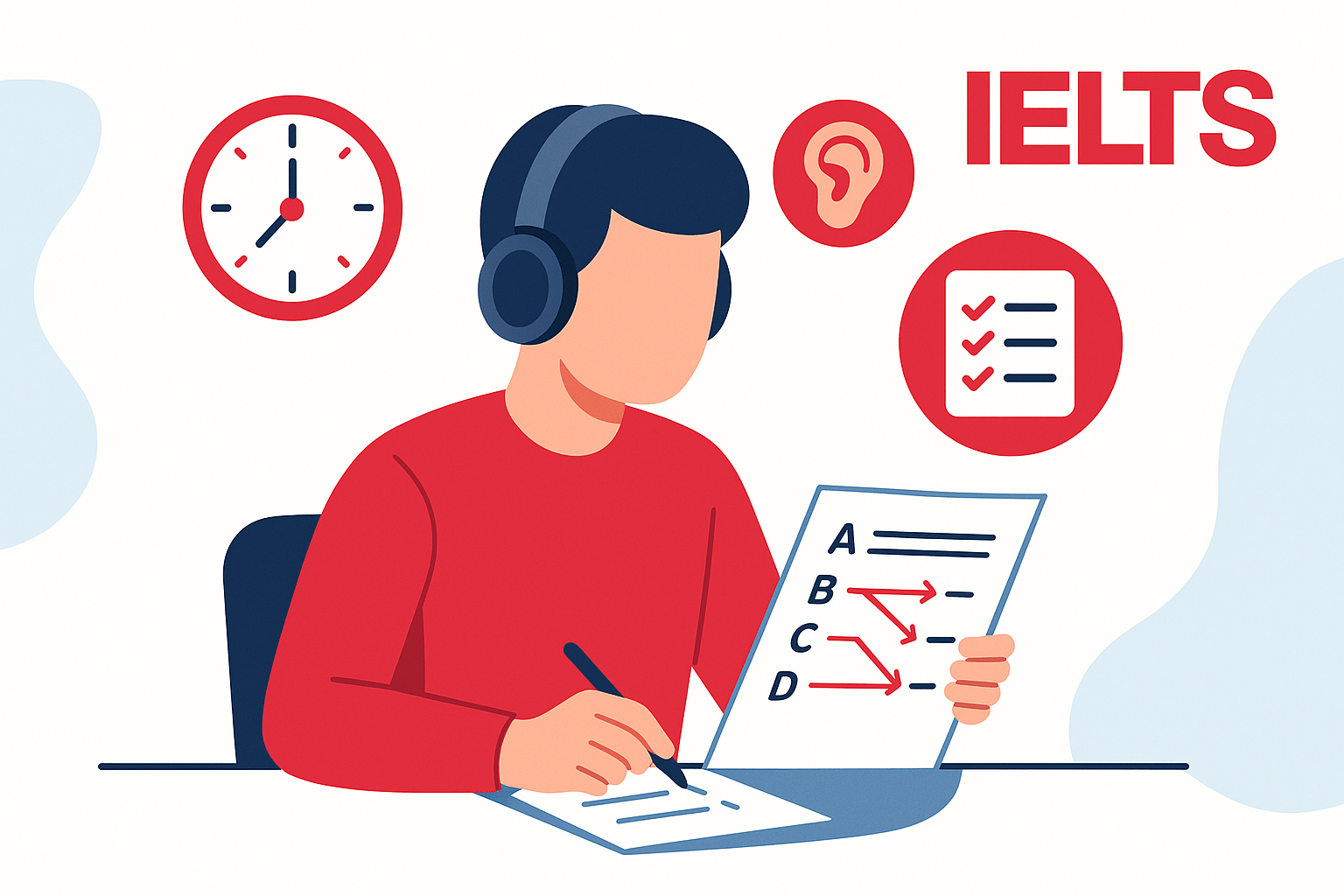As an international IELTS teacher working with learners from all corners of the world, I’ve seen many students struggle with IELTS Listening Form, Note, and Table Completion tasks. In fact, even those who have excellent listening skills often lose marks simply because they overlook small but crucial details. This guide is based on real classroom experiences, practical strategies, and proven techniques I’ve used to help my students score Band 7–9.
Understanding These Task Types
Form, Note, and Table Completion tasks are common in the IELTS Listening test. They require you to listen carefully to specific details and fill in missing information accurately.
- Form Completion focuses on factual details such as names, dates, phone numbers, or booking information.
- Note Completion requires you to identify keywords and listen for paraphrased phrases that match the missing points.
- Table Completion tests your ability to understand organised data and fill in the right piece of information in the right cell.
These questions appear in both Part 1 (simpler, factual) and Part 3 or 4 (more academic) of the test, which means they can range from straightforward to highly challenging.
Why Many Students Lose Marks
Over the years, I’ve noticed the same three problems crop up again and again in my classes:
- Not predicting the type of word needed – Students often listen passively instead of actively guessing if the answer will be a noun, verb, number, or date.
- Spelling and grammar errors – I’ve seen learners lose points for writing “Febuary” instead of “February” or using the wrong plural form.
- Not following the word limit – Many answers are marked wrong simply because they exceed the given “NO MORE THAN TWO WORDS” instruction.
If you’ve faced any of these issues, don’t worry — they’re fixable with the right strategy.
Step-by-Step Strategy for Success
1. Read the Instructions Carefully
In my first IELTS class with a new student, I always emphasise this: “The instructions are your first answer clue.” For example, if it says NO MORE THAN THREE WORDS AND/OR A NUMBER, writing four words will automatically get you zero marks.
2. Predict Before You Listen
Before the recording starts, quickly read the form, notes, or table and try to predict:
- The type of word (noun, verb, number, date)
- Possible vocabulary (synonyms and paraphrases)
For example, if the form says “Address: ______ Street”, you know to listen for a street name, not a random number.
3. Listen for Synonyms and Paraphrases
The IELTS Listening test almost never repeats the exact wording from the question. If the note says “cost,” the speaker might say “price,” “fee,” or “charge.” In one of my classes, a student missed the answer because they were waiting to hear “holiday cost” but the audio said “total price of the trip.”
4. Use the Order of the Questions
One thing my students love about these tasks is that the answers always follow the order of the recording. If you miss one, move on quickly — the next answer is just ahead.
5. Write While Listening
Some students try to wait until the end of the sentence to write. This is risky. Train yourself to jot down short forms or abbreviations so you can keep up. Later, during the transfer time, you can write the full, correct spelling.
Practice to Build Speed and Accuracy
Consistent practice is key. I recommend doing IELTS Listening practice tests regularly, focusing on these specific task types. Start with slower practice to build accuracy, then increase the speed to match real exam conditions.
If you need structured, tutor-led guidance, you might also consider IELTS premium courses which provide targeted training and feedback.
Extra Tips from My Experience
- Highlight keywords in the question before listening.
- Pay attention to stress and intonation — they often signal the answer.
- Watch for distractors (false leads in the recording). For example, the speaker might say:
“The meeting is on Wednesday — oh, actually, it’s been moved to Thursday.” - Check spelling and grammar during the final 10 minutes of the test.
For a broader understanding of question types and strategies, check my IELTS Listening Question Types Guide and Band 7–9 Listening Guide.
Final Thoughts
The IELTS Listening Form, Note, and Table Completion tasks may seem tricky at first, but with prediction, active listening, and consistent practice, they can actually become one of your easiest score boosters. I’ve watched countless students move from Band 6.5 to Band 8 just by improving these skills.
Remember — the IELTS test is as much about smart strategies as it is about language ability.
FAQ
1. How many words can I write in Form, Note, or Table Completion tasks?
Always follow the instructions. If it says “NO MORE THAN TWO WORDS,” writing three words will get you zero marks, even if the content is correct.
2. Are answers in these tasks in order?
Yes. The answers follow the sequence of the audio recording, so you can move forward confidently.
3. Can I use abbreviations?
Yes, during the listening, but make sure you write the full form correctly when transferring answers to the answer sheet.
4. Will the recording repeat the exact words from the question?
No. The IELTS test often uses synonyms and paraphrasing, so be ready to recognise equivalent expressions.
5. Where can I find official practice materials?
You can find reliable practice tests on IELTS.org, British Council, and IDP IELTS.




